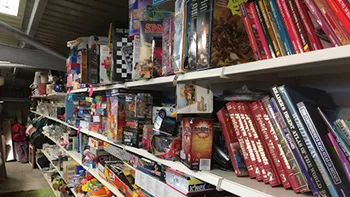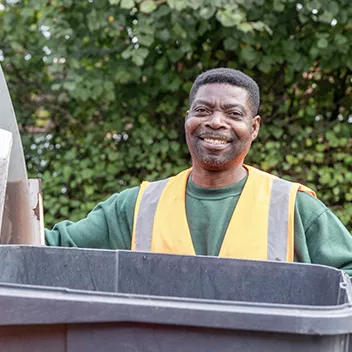
Community Reuse Shops
We operate two Community Reuse Shops located at our Kimpton Park Way and Fishers Farm Household Reuse and Recycling Centres.
Working through our partner Veolia, we operate six Household Reuse and Recycling Centres (HRRCs) across the SLWP region.

44,767 tonnes of waste received at HRRCs over a 12-month period – 65% of which was recycled *
Rules vary across the sites, so please check carefully before visiting.
The Contract we have with Veolia requires customer satisfaction levels of 80% or above for the HRRCs. Regular satisfaction surveys take place across the six sites to measure satisfaction levels and ensure this target is being met. The surveys have been taking place on a rolling basis since July 2016, lasting two weeks at each site.
The results of the latest round of surveys can be found here: HRRC Customer Satisfaction Surveys – Round 25 (pdf file)
* Based on 2020/21 tonnage data (April 2020 – March 2021)

We operate two Community Reuse Shops located at our Kimpton Park Way and Fishers Farm Household Reuse and Recycling Centres.
Most preferred environmental option
Reducing waste is the most preferred option. Minimising the amount of waste we produce in the first place is by far the most effective way of reducing the impact we have on the environment.
When waste is created, the waste hierarchy prioritises reuse. Where possible, reusing products and materials before it becomes waste is the next best option. By cleaning, repairing and refurbishing items, we can significantly increase the number of things we reuse.
Recycling is the most environmentally sustainable solution when it comes to disposing of waste. Recycling essentially turns our waste into new items or products, reducing the amount of raw materials required.
For waste that can’t be re-used or recycled, energy recovery is the next best option. Energy from waste is the process of incinerating non-recyclable waste to produce electricity. It helps to reduce our reliance on fossil fuels for power generation and decreases carbon emissions.
At the bottom of the waste hierarchy is the least desirable option: disposal. This is when waste is either sent to landfill or treated in an older-style incinerator that doesn’t recover energy from the process. Disposal should always be the last resort for waste.
Least preferred environmental option


